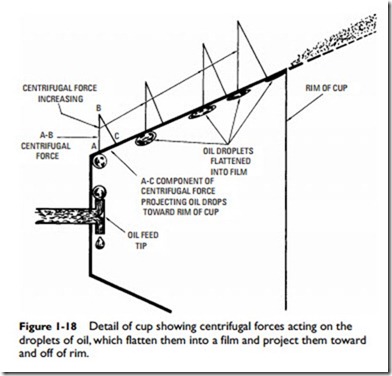Vaporizing (Pot-Type) Oil Burners
Figures 1-19 and 1-20 show a typical vaporizing (pot-type) oil burner. The fuel oil is vaporized for combustion by heating it from below. The vaporized fuel oil rises vertically where it is burned at the top. The following are the two basic types of vaporizing, or pot, oil burners:
1. The natural-draft pot burner.
2. The forced-draft pot burner.
In the former, the air necessary for combustion is provided by the chimney. The forced-draft pot burner relies on both the chimney and a mechanical device (e.g., a fan) for the air supply.
Sleeve burners (also referred to as perforated sleeve burners) rep- resent a third type of vaporizing, or pot, burner. Although these burners are used mostly in conjunction with small oil-fired equipment (e.g., kitchen ranges and space heaters), they can also be employed to heat a small house, if outside temperatures do not become too low.
Combination Oil and Gas Burners
Some oil burners are available with combination oil and gas firing accessories that make it possible to use either of these fuels in the
same burner. This is particularly advantageous in areas where low- cost gas is sometimes available.
The combination gas and oil burner illustrated in Figure 1-21 contains independent ignition and control systems for gas or oil. One convenience built into these combination burners is that the oil burner components and parts are standard and require only conventional service procedures. The safety features include a standard cadmium sulfide detection cell and primary relay control.
